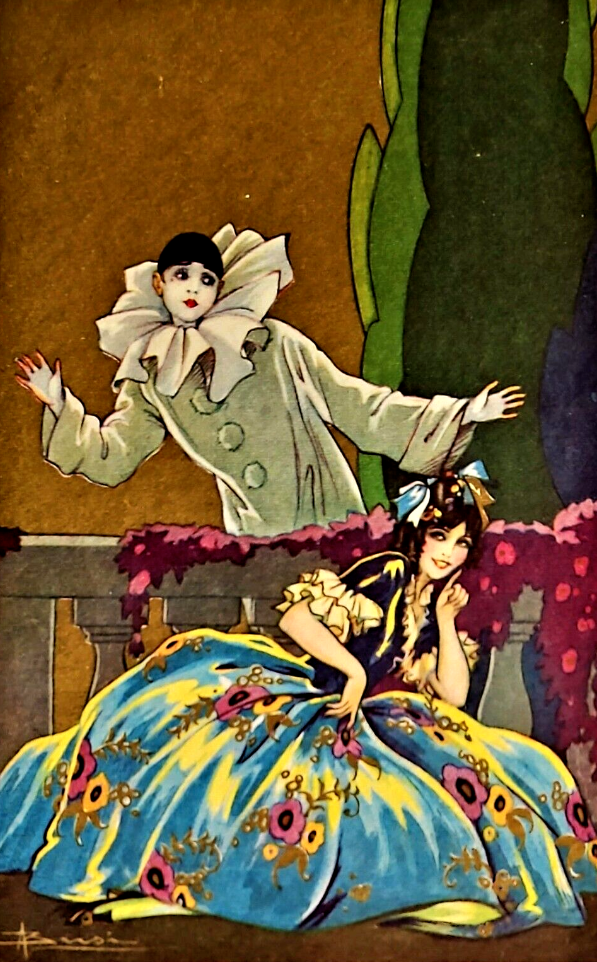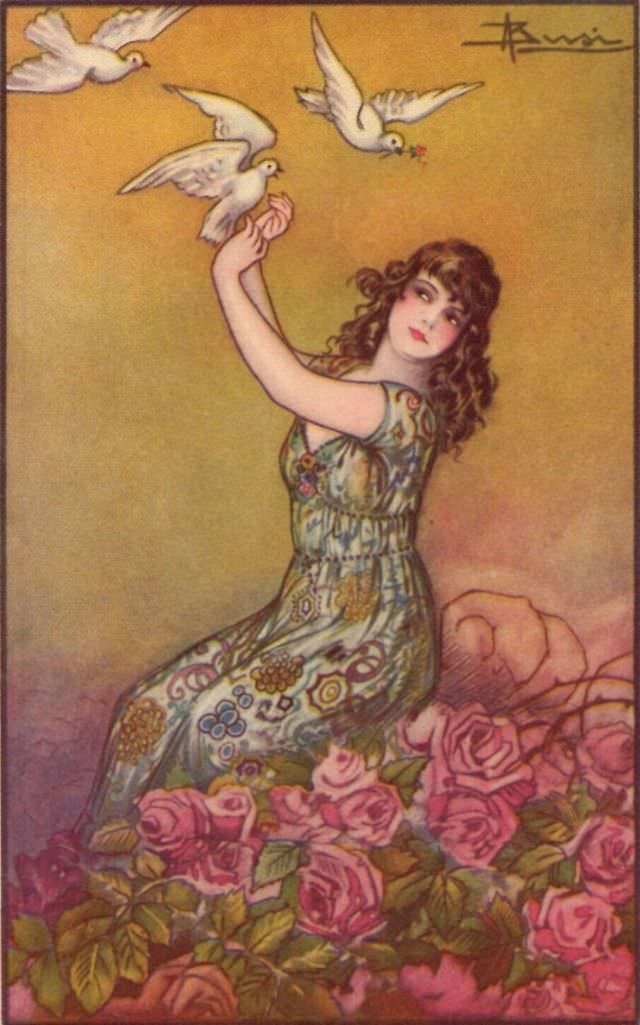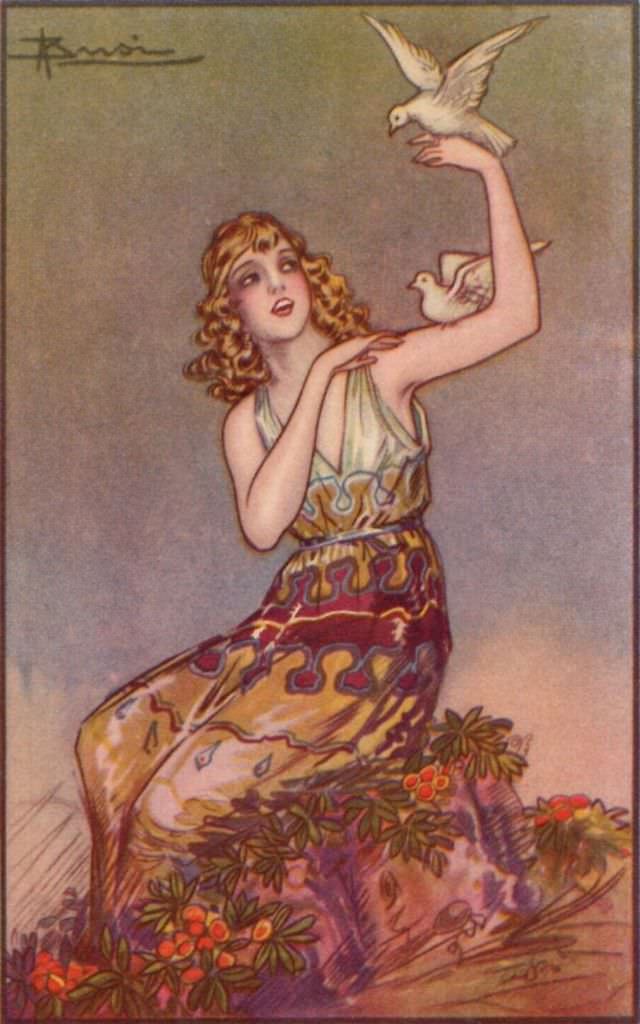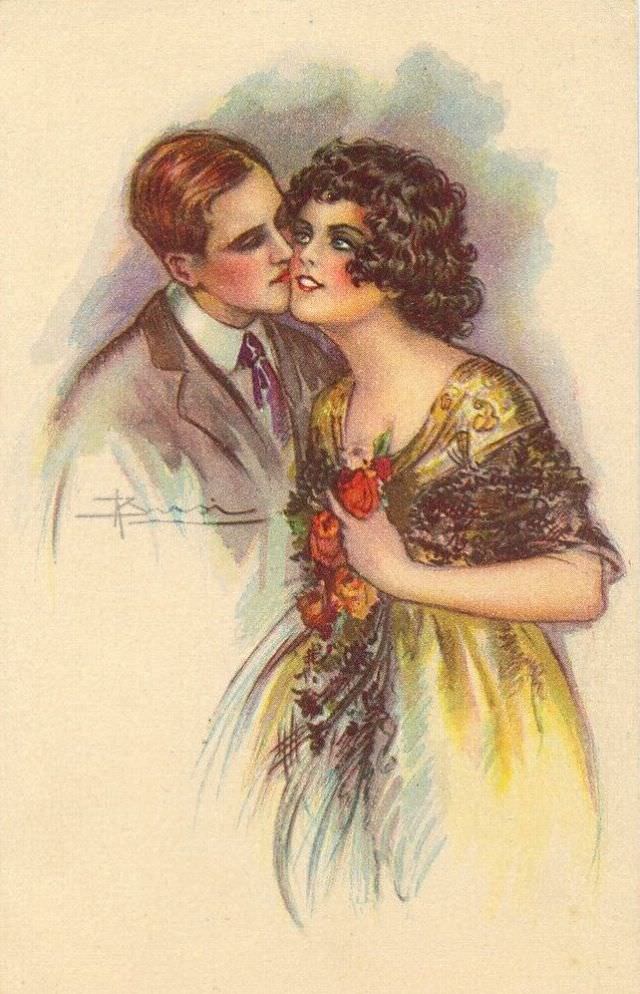Adolfo Busi, an Italian artist born in 1891, gained recognition for his distinctive and vibrant paintings during the 1910s and ’20s. After earning a diploma from the Academy of Fine Arts in Bologna, he focused on portrait painting. His debut came at the Roman Secession exhibition in 1914, where his talent began to shine. Over the next two decades, Busi’s work evolved, showcasing his skills in both fine art and commercial illustration.
Early Portraits and Style
In the 1910s, Busi’s portraits were characterized by their attention to detail and expressive quality. He had a remarkable ability to capture the essence of his subjects, whether they were formal portraits or more casual depictions. His early works often featured a soft color palette and careful brushwork, which highlighted the subtleties of his subjects’ expressions and attire. This period was crucial in establishing Busi’s reputation as a skilled portraitist..
Read more
Transition to Graphic Illustration
Around 1920, Busi expanded his artistic horizons by venturing into graphic illustration, particularly for advertising. He began collaborating with the Officine Grafiche Ricordi, a prominent graphic studio in Italy. This move marked a significant shift in his career, allowing him to blend his fine art skills with commercial art.
Notable Works in Advertising
Busi’s involvement with Ricordi led to several iconic projects. He was responsible for the Ricordi section at the first Advertising Poster Exhibit in Milan in 1938. His work included sketches for well-known brands like Borsari and Lepit. One of his most famous creations was the billboard poster for the VI National Contest for the Victory of Wheat in 1928. This poster, along with others like the ones for the Tripoli Lottery (1936-38) and the 1931 Tripoli Fair, showcased Busi’s ability to convey strong messages through compelling visuals.
Contributions to La Moda della Lana
From 1932, Busi illustrated the weekly publication La Moda della Lana, published by the Rossi Wool Factory. His illustrations played a significant role in the advertising campaigns of the 1930s. Busi’s artwork for La Moda della Lana combined his fine art background with his growing expertise in graphic design. The illustrations were vibrant, detailed, and engaging, helping to promote wool fashion in a visually appealing manner.
Work with Barilla
Busi’s collaboration with Barilla in the 1920s and ’30s produced some of his most memorable works. In 1925, he designed a calendar published by Chappuis in Bologna. This calendar featured charming drawings of children involved in various stages of pasta production, from sowing wheat to cooking pasta. The 1931 calendar, published by Ricordi, included a poster and postcards that became iconic. Notable examples are the Baby waiter astride a macaroni for February and the Dance of the spaghetti for December. These illustrations were marked by their playful and whimsical nature, showcasing Busi’s unique artistic style.
Unique Artistic Traits
Busi’s work is distinguished by an unmistakable ironic and amiable trait. His ability to infuse humor and charm into his illustrations made them stand out in the commercial art world. Even in his advertising work, Busi maintained a level of artistry that elevated his creations beyond mere promotional tools.

























